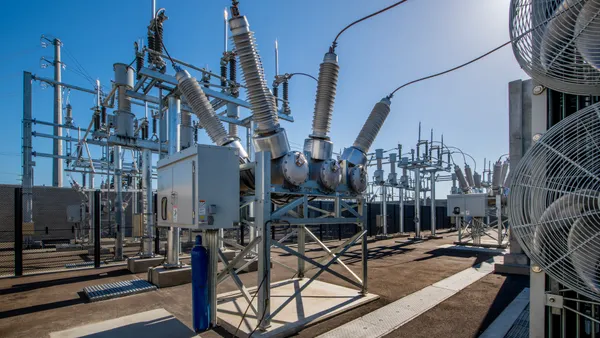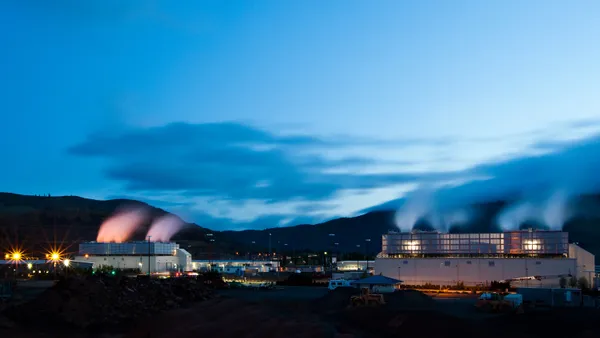Dive Brief:
- Legislation the Texas House of Representatives passed on a bipartisan basis on Tuesday could position the Lone Star State as a national leader on advanced nuclear energy, industry advocates said Wednesday.
- House Bill 14 would establish a state office to promote advanced nuclear supply chain and power generation projects in Texas and create a fund to provide grants of up to $200 million for eligible nuclear construction projects.
- The bill heads to the Texas Senate with about six weeks to go in the 2025 regular legislative session.
Dive Insight:
The Electric Reliability Council of Texas added 43 GW to its five-year load growth forecast last year, or more than one-third of an expected 128 GW of U.S. load growth through 2029, Grid Strategies said in December.
New data centers (18 GW), cryptocurrency mines (6 GW), hydrogen production (5.8 GW), other industrial facilities (5.7 GW) and oil and gas facilities (2.8 GW) will drive the bulk of the expected load growth through 2029, ERCOT said earlier this month in an updated forecast. On Thursday, the Public Utilities Commission of Texas approved three 765-kV transmission lines — the state’s first — to reduce congestion in the rapidly-electrifying Permian Basin oil patch.
“As Texas considers its energy future, the time has come to invest in nuclear power — an energy source capable of ensuring grid reliability, economic opportunity, and energy and national security,” Texas Nuclear Association President Reed Clay said in a statement Wednesday.
Advanced nuclear firms have already proposed or begun developing projects in Texas.
The farthest along is Natura Resources’ 1-MW, molten salt-cooled thermal research reactor under construction since late last year at Abilene Christian University. In February, Texas A&M University invited Aalo Atomics, Kairos Power, Natura and Terrestrial Energy to build reactors on its RELLIS campus near College Station, according to the American Nuclear Society. Natura subsequently announced plans to build two 100-MWe reactors in College Station and the Permian Basin.
Also in February, Last Energy said it would deploy up to 600 MW of microreactor capacity to serve data center customers in ERCOT.
And in March, Dow Chemical and advanced nuclear developer X-energy submitted a construction permit application to the U.S. Nuclear Regulatory Commission, advancing plans for a four-reactor, 320-MWe power plant to replace existing fossil-fired generation at Dow’s Seadrift, Texas petrochemical plant. That project awaits a final investment decision by Dow, the companies said last month.
H.B. 14 would authorize a grantmaking account, known as the Texas Advanced Nuclear Development Fund, that could help get larger projects like Seadrift off the ground. The fund would reimburse expenses directly related to advanced nuclear reactor construction, including license application costs and procurement of long-lead equipment, up to the lesser of $200 million or 50% of the expense. It would also reimburse a range of expenses for initial project and supply chain development, such as site planning, front-end engineering and fuel fabrication, up to the lesser of 50% or $12.5 million.
H.B. 14 also establishes the Texas Advanced Nuclear Energy Office within the Texas governor’s office to set statewide nuclear strategy, develop a homegrown advanced nuclear supply chain, attract advanced nuclear developers to Texas and facilitate nuclear project permitting through a newly-created “nuclear permitting coordinator” position, among other responsibilities.
The nuclear development fund, nuclear energy office and nuclear permitting coordinator affirm recommendations made in November by the Texas Advanced Nuclear Reactor Working Group, overseen by the PUC.
Though Gov. Greg Abbott, R, has not yet commented publicly on H.B. 14, he has consistently championed the state’s nuclear industry, saying in November that “we are ready to be No. 1 in advanced nuclear power.”













